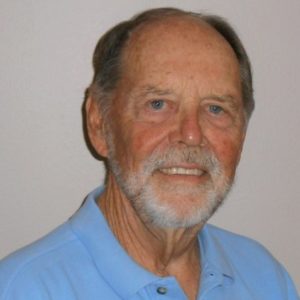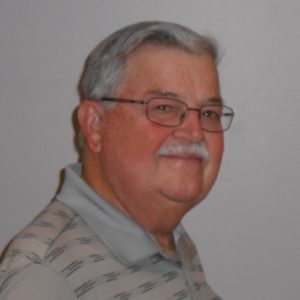September 2021
Honoring Yesterday – Protecting Tomorrow
Vol. 52, No. 9
WHAT’S INSIDE?
VRESDC Mandated Reporting of Elder Abuse
Labor Day RESDC Office Closed
President’s Message
Virtual Health Fair
Pension Facts
Outcomes of COVID-19 Vaccines
2021 Walk4ALZ San Diego
Recent Events
Welcome New Members
October Virtual Presentation
Vaccine Mandates Popular
See’s Candies Group Discount
In Memoriam
FDA Vaccine Approval Process
September Calendar of Events
6—(Mon.) Labor Day
RESDC and SDCERA offices closed for holiday
9—(Thurs.) RESDC Board of Directors Retreat
Via Zoom Web Conferencing, 9:30 a.m.
16—(Thurs.) SDCERA Board of Retirement Meeting
9:00 a.m.
View the NETWORK
as a printable PDF
Are you on social media?
Stay connected with us!
QUOTE OF THE MONTH
If the wind will not serve, take to the oars.
▪ Latin Proverb
VIRTUAL RESDC PRESENTATION
COUNTY OF SAN DIEGO, AGING & INDEPENDENCE SERVICES
MANDATED REPORTING OF ELDER AND DEPENDENT ADULT ABUSE
RESDC has partnered with Aging and Independence Services to bring you our next in a series of presentations throughout 2021!
When: Tuesday, September 14, 2021 at 10:00 a.m. Where: Online Zoom Meeting Room

Anabel Kuykendall
Program: The presenter, Anabel Kuykendall, graduated from SDSU with a degree in Psychology, worked for non-profit organizations and has extensive case management experience. She joined the County of San Diego, Aging and Independence Services in June 2000 as part of the Health and Community Engagement Team, specifically working in Outreach and Education and as Coordinator of South County Action Network (SoCAN).
This presentation, Mandated Reporting of Elder and Dependent Adult Abuse, provides legally mandated reporters the legal requirements for reporting elder and dependent abuse. It describes the types and signs of abuse and the role of Adult Protective Services and the Long-Term Care Ombudsman programs. It fulfills the instruction obligations of employees and volunteers with public and private agencies.
RSVP: To learn more about this presentation, including registration, visit www.resdc.net/events or you can call the RESDC office at 619-688-9229. □
HAPPY LABOR DAY!
The RESDC and SDCERA offices will be closed on Monday, September 6th, in observance of Labor Day. Emails and voice mails will be answered on Tuesday, September 7th. □
PRESIDENT’S MESSAGE
By Stan Coombs
 RESDC Members;
RESDC Members;
It’s late July, as this is written for early September arrival in members’ mailboxes, and we’re hearing frighteningly familiar warnings about a severe new COVID surge, that can be explained, we’re told, by lagging vaccinations in the face of a more lethal variant of the COVID virus.
The Delta Variant, it’s called, and new research at universities and government agencies reveals that it produces as much as 1,000 times the number of viral particles as other strains, making outbreaks harder to control.
The 118,791 new cases reported nation-wide, reported for July 27th by Johns Hopkins, for example, is 34 times the 3,499 reported for June 27th, a scant 30 days before. Who knows what the numbers will be in another month? Will we find ourselves back on track for the nearly 300,000 new cases a day we experienced in early January?
The other part of the problem is that half the U.S. population remains unvaccinated and the rate of vaccinations has fallen precipitously. The number of folks fully vaccinated was rising by nearly 4 million a day in early April, according to Smart News reporting for Johns Hopkins. It’s rising by only about 400,000 a day now, despite the new surge. At that rate, it’ll take a while to reach the 70 to 90 percent level needed for herd immunity.
And we so much wanted to believe the pandemic was over. . .
Some find comfort that increasing case counts were occurring again in only five or six states with the lowest number of vaccinations. But the number of new cases in the unvaccinated set is now rising across the board, with the Center for Disease Control (CDC) announcing that 97% of people being hospitalized for COVID and 99% of people dying from COVID are unvaccinated.
Need to clarify here that any encouragement in this piece, for the unvaccinated to become vaccinated, is not intended for those who don’t vaccinate for legitimate medical reasons. It’s those who don’t do so due to misinformation, or say they “just haven’t gotten around to it,” whom we hope will reconsider.
One health commentator opined that a goodly number of unvaccinated folks may be inhibited by the limited emergency-use approval granted available vaccines by the Food and Drug Administration (FDA), and those folks are more likely to become vaccinated when full approval is granted. He worries about why it’s taking the FDA so long to do that.
Three vaccines have received that emergency-use approval, Pfizer, Moderna and Johnson and Johnson. Three hundred and forty-three million doses have been administered and 164 million Americans are fully vaccinated, according to the CDC. Peer-reviewed studies have been published describing their safety and effectiveness, and Pfizer and Moderna submitted applications for full approval last May and June. Yet the FDA hasn’t granted further approval and given no indication when that may happen.
Reports indicate the FDA’s maximum review period is six months plus an initial 60-day window to make sure the application is complete and establish the type of review to be used. That means a decision should come for Pfizer and Moderna by January and February 2022. One would hope sooner, given that the FDA already reviewed initial clinical trial data for both before granting the emergency use approvals.
A recent Kaiser Family Foundation survey indicated that a third of unvaccinated adults and about half of those who identified themselves as “wait and see types” say they’d be more likely to become vaccinated if (at least) one vaccine had full approval.
That can’t happen soon enough, unless, of course, it happened between this writing and receipt of this edition of THE NETWORK in members’ mailboxes. . .we’re told the FDA is in a full court press to get the job done.
Stan Coombs□
SAVE THE DATE
2021 RESDC VIRTUAL HEALTH FAIR OCTOBER 28, 2021 AT 10 AM
We are currently in the planning stage for a Virtual Health Fair, scheduled for Thursday, October 28, 2021 at 10 am. This collaborative, interactive event will be presented via Zoom and will include our partners at SDCERA and Pacific Group Agencies who will provide information on the upcoming Benefit Plan Open Enrollment Period. Stay tuned to the October edition of THE NETWORK for more details! □
PENSION FACTS – Billions Went to Millions in Covid-19 Stimulus
By Chris Heiserman, Director
 Three rounds of direct payments authorized by Congress in 2020 and 2021 in response to pandemic job losses and financial distress delivered thousands of dollars to most American households. The first set of cash payments were funded with $300 billion of the $2.2 trillion CARES Act (Coronavirus Aid, Relief, and Economic Security Act) enacted in March 2020; billions more for the second and third rounds came from the Covid-related Tax Relief Act of 2020 passed in December 2020 and the American Rescue Plan Act of 2021 approved in March 2021.
Three rounds of direct payments authorized by Congress in 2020 and 2021 in response to pandemic job losses and financial distress delivered thousands of dollars to most American households. The first set of cash payments were funded with $300 billion of the $2.2 trillion CARES Act (Coronavirus Aid, Relief, and Economic Security Act) enacted in March 2020; billions more for the second and third rounds came from the Covid-related Tax Relief Act of 2020 passed in December 2020 and the American Rescue Plan Act of 2021 approved in March 2021.
As an example, a family of four (two adults, two children) should have seen $11,400 added to their bank account from the three Economic Impact Payments (EIPs). Did this extra cash for an estimated 70-80% of American households eligible for full stimulus checks help them weather the Covid-19 economic strife? Considering the variety of circumstances families faced in the beginning of the pandemic (some suffered job loss, others did not; some had savings to fall back on, many others did not; many were saddled with substantial credit card debt), the answer to the previous question is complicated.
Anqi Chen, a research economist with the Center for Retirement Research at Boston College, analyzed that issue in a recent briefing paper. In establishing the context for her examination of the impact of the stimulus payments, she noted that even before the pandemic during a healthy economic climate, some 40% of households reported they would have trouble covering a $400 unexpected expense. She derived this statistic from the Federal Reserve Board’s annual Survey of Household Economics and Decision-making (SHED), which asks more than 11,000 households about measures of their financial condition. One important metric is whether families have what they describe as “precautionary savings.” This is what some would call “rainy day” funds, available to pay for modest unanticipated expenses like a car repair or faucet leak. Such savings can keep households from taking money out of retirement savings or adding to credit card debt.
Given the different financial challenges facing families, Chen posed the question of how certain households used the stimulus payments. She said households that lost income in the pandemic probably needed the extra cash to make ends meet; on the other hand, households that did not experience unemployment could use the payments to build up “precautionary savings” and have a financial cushion against unexpected expenses.
According to Chen, for workers who lost their jobs or had their pay reduced, the first EIP provided temporary relief. For them, the percentage unable to handle that $400 expense dropped from 51% to 36% between April and July of 2020. For the households who kept working, the segment having difficulty covering the $400 expense dropped from 40% to around a third early in the pandemic.
While the first EIP provided emergency relief to households that lost income due to job losses, Chen said it appeared that the second and third stimulus checks aided families in improving their overall financial condition. She said about three quarters of all households saved their last two EIP payments or used them to pay down debt. She suggested the long-term impacts of the stimulus checks on household fiscal health will have to be studied over the next few years; however, the short-term result was improved financial condition for millions of American families.
Of course, infusing billions of dollars into the national economy through direct cash payments to households continues to be controversial. Only time will provide the data and public discourse that will lead undoubtedly to a wide variety of opinions as to the value of this huge undertaking. Bold and massive policy initiatives in response to national economic crises are always contentious. Remember the auto industry crisis of 2008–2010 that was a part of a financial crisis resulting in the Great Recession. That bail-out was more than $80 billion. Congress approved a $700 billion bail-out of the banks on Wall Street in 2008; that financial crisis brought us the now famous phrase “too big to fail.” □
OUTCOMES OF COVID-19 VACCINATIONS
AXIOS news service reports in a fascinating four sentences, the outcomes of COVID-19 vaccinations of Americans, based on data from CDC and state COVID-19 dashboards.
Did not subsequently test positive for COVID-19: 99.923%
Breakthrough cases: 00.077%
Hospitalized: 00.004%
Died: 00.001%
Enough said. . . □
2021 WALK4ALZ SAN DIEGO
Saturday, October 16th
8:00 am in Balboa Park
By Laurie Pennington, 2021 Team RESDC Captain
 I am honored to be asked to serve as the Team Captain for Team RESDC again, for the 2021 Walk4ALZ in Balboa Park.
I am honored to be asked to serve as the Team Captain for Team RESDC again, for the 2021 Walk4ALZ in Balboa Park.
More than 6 Million Americans live with Alzheimer’s. It’s touched too many lives. It’s emotionally distressing to watch those we love lose their memory and struggle with simple daily tasks and conversations!
Last year, with the COVID lockdowns, we all made adjustments and sacrifices, did the socially distancing thing, and wore our masks, but unfortunately we weren’t able to walk to raise money for causes we have a passion for.
I’m very excited to once again have my 13-year-old grandson, Franco, join me on the Walk4ALZ, and we hope that you’ll consider bringing your kids and/or grandkids to introduce them to the wonderful experience of walking for a cause to help others.
Please join “TEAM RESDC” for the upcoming Saturday, October 16th Walk4ALZ San Diego at 8:00 am in Balboa Park, for the biggest and best Alzheimer’s walk ever. Simply visit the link provided below, and sign-up to walk with us, or donate, or both walk and raise donations.
To register, simply visit the TEAM RESDC Walk4Alz team page (link below) and join our team!
https://alzsd.rallybound.org/walk4alz/teamresdc .
If you’re unable to physically participate, please consider making a $35 donation to our team fundraising campaign.
Let’s make this year the last year anyone experiences Alzheimer’s with no hope of a cure! Help to stomp out Alzheimer’s. It starts with each one of helping – either by walking and raising money, or just donating!
Thank you! □
RECENT EVENTS
Research Brief: What Level of Long-Term Services and Supports Do Retirees Need? The Center for Retirement Research at Boston College released a research brief addressing these questions. The brief’s key findings are:
- Many retirees are concerned about the risk of requiring substantial long-term care as they age, but the likelihood is unclear.
- This analysis, using two decades of data from the Health and Retirement Study, classifies the severity of care needs, accounting for both intensity and duration.
- The results suggest about one-fifth of retirees will need no support at all and about one-quarter will have severe needs, with the rest facing low to moderate needs.
- The demographic patterns are as expected: those who are married, better educated, white, or in better health have more manageable needs.
Subsequent briefs will explore the resources available to meet care needs and the types of people most at risk of facing unmet needs.
To access the full brief, visit: https://crr.bc.edu/category/briefs/ .
Public Pension Funding Rises to 82.6%, Highest Level for Index. The overall funding ratio of the 100 largest U.S. public pension plans rose to 82.6% as of June 30, up from 79% three months earlier, according to the Milliman 100 Public Pension Funding index.
The funding ratio is the highest recorded since the inception of the index, according to a news release Wednesday. It is also the first time since Milliman began the index that the estimated deficit fell below $1 trillion, to $975 billion as of June 30 from $1.17 trillion as of March 31.
Since 2012, Milliman has conducted an annual study of the 100 largest defined benefit plans sponsored by U.S. governments. The Milliman 100 Public Pension Funding Index projects the funded status for pension plans included in our study, reflecting the impact of actual market returns, utilizing the actual reported asset values, liabilities, and asset allocations of the pension plans.
To learn more, visit: https://www.milliman.com/en/insight/ . □
WELCOME NEW MEMBERS
Christine Alcala, HHSA
Pam Alvarez, Child Support
Nancy Beecham, Edgemoor
Sharyl Blackington, General Services
John Diehl, Superior Court
Frederick Embalsado, Probation
Mikel Haas, Technology Office
Lucila Hedrick, Medical Records Tech
Sara Isgur, General Services
Alejandro Manrique, District Attorney
Vincent Martin, Probation
Vickie Molzen, HHSA
Ted Olsen, Ag/Weights & Measures
Pauline Palomino, Probation
Jo Pastore, Public Defender
Janet Phillips Neiditch, HHSA
Ed Baldomero Riego, General Services
Gustavo Rios, Public Works
Leonardo Rodriguez, Sheriff
Nassrin Samii, Public Works
Avelina San Gil, Auditor/Controller
Marina Sarandi, Sheriff
SAVE THE DATE
VIRTUAL RESDC PRESENTATION
Tuesday, October 12, 2021 10:00 a.m.
Online Zoom Meeting Room
County of San Diego, Aging & Independence Services
Alzheimer’s Disease and Other Dementias
This presentation, Alzheimer’s Disease and Other Dementias, is an engaging presentation that provides an overview of the first signs of Alzheimer’s and other dementias. Includes tips and tools for caregivers.
RESDC continues our partnership with Aging and Independence Services to bring you another great presentation.
RSVP: To learn more about this presentation, including registration, visit www.resdc.net/events or you can call our office at (619) 688-9229. □
VACCINE MANDATES PROVE POPULAR
Polls done in April and May, and June and July of this year, by the 50-state COVID-States Project, show that COVID vaccine mandates are popular overall, despite being controversial with a minority of Americans.
Almost two-thirds of Americans polled said they’d support governments requiring everyone to get vaccinated, even though no such broad mandate has been proposed. Those supporting mandatory vaccinations increased slightly between the two polls.
AXIOS computer news service published findings from four of the specific questions asked in the survey:
Require everyone to get COVID-19 vaccine – 62% affirmative in April and May, 64% affirmative in June and July.
Require COVID-19 vaccine to board airplanes – 67% and 70%.
Require children to get COVID-19 vaccine to be allowed in school – 58% and 61%.
Require college students to get COVID-19 vaccine to attend classes – 66% and 66%.
The COVID States Project describes itself as having been launched in 2020 by a multi-university group of researchers with expertise in computational social science, public opinion polling, epidemiology, public health, communications and political science. Their aim, they say, is to help practitioners and governments make informed decisions and allocate resources more effectively. □
SEE’S CANDIES GROUP DISCOUNT UPDATE
RESDC members are entitled to a 10% group discount on selected items at the two See’s Discount Stores: 3751 Rosecrans Street, San Diego, 92110; and 1830 Marron Road, Carlsbad, 92008. You must ask the See’s sales team which items are selected. You need to show them your RESDC membership card for the discount. Be sure to mention that you are a member of Retired Employees of San Diego County. Occasionally a RESDC member is denied the discount by a clerk at these See’s stores. When this happens, be sure to clarify that you are not an active County employee, but you’re a member of RESDC. The county no longer participates in the See’s group discount program. If you’re still refused a discount, ask to speak to a store manager.
See’s has discontinued the sales of their one-pound paper gift certificates and they’ve switched to plastic gift cards instead. If you still have some of the paper gift certificates in your possession, rest assured they will still be honored at all See’s Candies shops.
RESDC will offer $25 See’s Candies gift cards to our members at a discounted price of $22 each. This is a $3.00 savings over the retail price.
Please note that we only accept checks for purchasing See’s gift cards. We are unable to accept cash or credit cards for See’s Candies gift card purchases at this time. The gift cards are redeemable at any of the See’s retail stores and for online purchases.
If you would like to purchase gift cards from RESDC, please address an envelope to RESDC, 8825 Aero Drive, Suite 205, San Diego, CA 92123. Enclose a check made out to RESDC for the number of gift cards you would like at $22 for each gift card. Be sure to include postage stamps so we can mail the gift cards to you. Enclose one stamp if purchasing less than five gift cards. If purchasing more than five gift cards enclose 75 cents of postage. If purchasing more than nine gift cards enclose 95 cents of postage. See the postage chart at: www.resdc.net/sees-candies-discount. We will supply the return envelope to put the gift cards into.
These new gift cards are redeemable online or at any See’s Candies shops. □
IN MEMORIAM
William Adam, Surviving Spouse
Ron Alexander, HHSA
Amadeo Arreola, Social Services
Orlando Arroyo, Auditor & Controller
Raul Atilano
Dorothy Baber, Superior Court
Sharon Barnett, General Services
Kevin Barrett, Sheriff
Vera Belden-Gillmore
Patricia Belling, HHSA
Tina Bennett, Surviving Spouse
Frances Bevilacqua
Mary Blair, Board of Supervisors
Rena Block, HHSA
Michael Bowles, Sheriff
Herman Branin
Anne Buck
Bienvenido Carmona, Housing/Comm Devlp
Ofelia Carrillo, Probation
Rodelio Cataroja, Environmental Health
Marilyn Chisholm
James Christensen, Treasurer Tax Collector
Valarie Colgate, Public Works
Sharen Conery, HHSA
Donald Continelli, Sheriff
Virginia Cunha, Surviving Spouse
Paul Davilla, HHSA
Mary DeUybungco, Library
Cecelia Dueber
Robert Evans, Sheriff
Rosemary Gandy, HHSA
Donald George, Public Works
Donald Giesing, Social Services
Cynthia Gilman
Carol Granatowski, Surviving Spouse
Billy Guinn, Sheriff
Mary Hance, HHSA
Michele Herrmanns, Ag/Wghts & Measures
Dolores Hickey, Surviving Spouse
Wanda Highsmith, HHSA
Darrel Hill, Probation
Donald Hilton, HHSA
Robert Hoffman
Mary Horning, HHSA
Douglas Huse, Sheriff
Teresa Jacobs, Surviving Spouse
Grace Johnson
Janice Johnson, HHSA
Linda Johnson, HHSA
Joan Kalahiki
Hillel Kaplan
Carmalita King, Social Services
Rita Lankford*, HHSA
Mary Lanush, Social Services
Robert Larson, Surviving Spouse
Monica Magale, HHSA
John Massucco, District Attorney
Virginia McAloon, General Services
Patricia McCurdy
Michael McDermott, HHSA
John McGowan, Auditor & Controller
James Meier, Facilities Management
Rita Meier, Facilities Management
Claire Michaels, Social Services
Concepcion Minas
Carol Nelson, Superior Court
Don Nix, Sheriff
Eulalia Obispo, Registrar of Voters
Michael Oneal, Sheriff
Richard Orey
Thomas Overmyer, Sheriff
Charles Patrick
Karen Penniman, Surviving Spouse
Venedict Racheeff
Elizabeth Rielly, Social Services
George Riley, Registrar of Voters
Joanne Robinson, Social Services
Barbara Sarten, Social Services
Lorna Singleton, Social Serivices
Steven Smith, HHSA
Ralph Strahm, Library
Rodolfo Sunga, Sheriff
Gilbert Tapia, Sheriff
Patricia Taylor, Surviving Spouse
Barbara Thomas, Assessor/Recorder
Bettejane Tileston, HHSA
Alva Trailer, Probation
Louis Turano
Barbara Van Ravesteyn, Surviving Spouse
Robert Vaughn, Probation
Diane Vitko, Probation
Linda Wilson, HHSA
Marilyn Yarger, Surviving Spouse
Soledad Yturralde
Member Privacy
Any retiree or surviving spouse who does not want his/her death notice published in the “In Memoriam” column may notify the RESDC office and your privacy will be maintained.
The Surviving Spouse of a RESDC members is eligible for RESDC membership. For enrollment assistance, please call (619) 688-9229. □
FAST TRACK DEVELOPMENT AND APPROVAL OF EMERGENCY COVID-19 VACCINES UNIQUE
FDA Approval Usually Takes Years
Life-saving vaccinations have been administered to millions of Americans this past year, to fight the COVID pandemic. This massive program was possible because the vaccines received emergency use authorization from the U.S. Food and Drug Administration (FDA). The speed with which the vaccines were developed and injected into arms was both mind-boggling and highly unusual.
Even under normal, non-emergency, circumstances, we hear plenty of criticism about the FDA’s slow review of potential wonder drugs. It might be enlightening to describe that usual process and why it takes so long.
We understand it all happens at the FDA’s Center for Drug Evaluation and Research in Beltsville, Maryland, where an independent team of scientists determines whether both brand name and generic drugs work properly, and the benefits outweigh risks. The full FDA drug approval process averages 12 years and costs the manufacturer more than $2.5 billion, we’re told. Five steps are described: discovery/concept, preclinical research, clinical research, FDA review, and FDA post–market safety monitoring.
Once a pharmaceutical researcher dreams up a potential drug, pre-clinical laboratory and animal studies are completed to “demonstrate the biological activity of the drug against the targeted disease,” and to evaluate for safety. Average time: 3 ½ years.
If successful, the company files an Investigational New Drug Application (IND) with the FDA, requesting permission to test the drug on volunteers. The IND becomes approved if the FDA doesn’t disapprove it within 30 days. The IND must include the results of previous testing, descriptions of how the drug works, any toxic effects noted and proposed manufacturing processes.
With IND approval, Phase I clinical trials follow, with doses administered to 20 to 80 healthy volunteers to determine how the drug is absorbed, distributed, metabolized, excreted and the duration of the action. Average time: One year.
With success in Phase I, Phase II clinical trials follow with the drug administered to 100 to 300 volunteers to identify minimum and maximum dosages and assess the drug’s effectiveness. Average time: Two years.
With success in Phase II, Phase III clinical trials follow, with the drug administered to up to 3,000 volunteer patients in clinics and hospitals, who are closely monitored and queried about possible side effects, to determine the safety and effectiveness of the drug. A percentage of the volunteers receive placebos. Average time: Three years.
With success in Phase III, the company develops and files a New Drug Application (NDA) including all the data accumulated to date. The NDA typically totals more than 100,000 pages. Average FDA review time: 2 ½ years.
After full approval of the NDA, Phase IV marketing studies continue accumulating experimental data from patients actually using the approved drug.
The phases “usually” total 12 years. But there is some flexibility. As we all recently learned, this usual process can be abbreviated in emergencies, such as our current COVID Pandemic, via one of four optional regulatory protocols that speed things along when a drug is either the first available treatment or has advantages over existing treatments. In the case of the COVID-19 pandemic, 12 years was cut to about nine months to get an emergency vaccine onto the streets. □
THE NETWORK is the official monthly newsletter of the Retired Employees of San Diego County, Inc. (RESDC), a private non-profit organization.
The information printed in THE NETWORK is believed to be from reliable sources. However, no responsibility is assumed by THE NETWORK for inaccuracies contained herein.
Business and Inquiries: Business matters and address changes may be recorded on our voicemail at any time, call (866) 688-9229. Please spell your name so the correct member record can be located.
Retired Employees of San Diego County, Inc.
8825 Aero Drive, Suite 205 | San Diego, CA 92123
Office Hours: 9 a.m. to 2 p.m. Monday through Friday
TELEPHONE: (866) 688-9229 Toll Free
FAX: (619) 688-0766
E-MAIL: resdc@resdc.net


